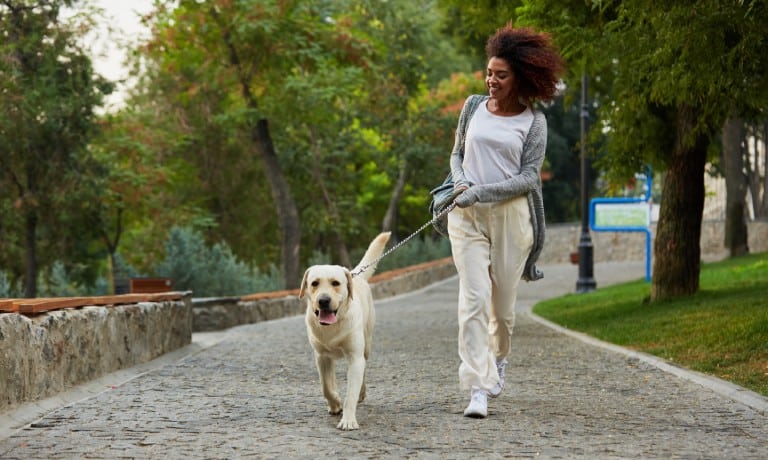
Walking your dog is a great way to bond with your furry friend and provide them with the physical activity they need. However, ensuring their safety and yours requires some planning and awareness. Check out the best safety tips for walking your dog.
Use Proper Gear
Choosing the right walking gear for your dog is crucial for a safe and enjoyable walk. A properly fitted harness is often more secure and comfortable than a collar, especially for larger dogs or dogs prone to pulling. Harnesses can help distribute pressure evenly across your dog’s body, reducing the risk of injury. Additionally, using a sturdy leash that provides good control is essential. Reflective gear can also enhance visibility during early morning or evening walks, making it easier for drivers and cyclists to see you and your dog. Don’t forget to carry waste bags to clean up after your pet, ensuring a pleasant experience for everyone in the neighborhood.
Know Your Dog’s Behavior
Understanding your dog’s behavior is fundamental to a safe walk. Pay attention to their body language and be aware of any signs of stress or aggression. Knowing how your dog reacts to various triggers, such as other animals, loud noises, or unfamiliar people, can help you anticipate and manage potentially dangerous situations. Training your dog to follow basic commands like “sit,” “stay,” and “leave it” can also significantly improve your control during walks. Regular training sessions can strengthen your bond with your dog and ensure they respond promptly in critical moments. Being proactive and observant about your dog’s behavior will make your walks more enjoyable and safer.
Choose the Right Time and Route
Selecting the appropriate time and route for your walk is vital for your dog’s safety. Avoid walking during extreme weather conditions, such as very hot or very cold temperatures, which can be harmful to your dog. Early mornings and late evenings are often the best times for walks, as temperatures are usually milder. Additionally, choosing a route that is safe and familiar can help reduce potential hazards. Stick to well-lit areas and avoid busy streets or places with heavy traffic. If you’re exploring new routes, make sure they are dog-friendly and free from potential dangers, such as broken glass or aggressive animals. Planning your walk with safety in mind ensures a more pleasant experience for both you and your dog.
Handle Encounters With Other Dogs
Encounters with other dogs can be unpredictable, so knowing how to handle them safely is important. Always assess the situation before allowing your dog to interact with another dog. Look for signs that the other dog is friendly and well-behaved. If you’re unsure, keep your distance and continue walking. When introducing dogs, keep them on a leash and allow them to approach each other slowly and calmly. Be prepared to intervene if the interaction becomes tense or aggressive. Additionally, teaching your dog to focus on you and follow commands can help manage their behavior during encounters. Ensuring that your dog is well-socialized and comfortable around other dogs can make these interactions smoother and safer.
By following the best safety tips for walking your dog, you can create a positive and secure experience for both you and your furry friend. A well-prepared and attentive dog owner is key to a happy and healthy canine companion.




